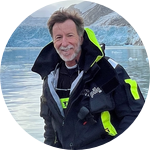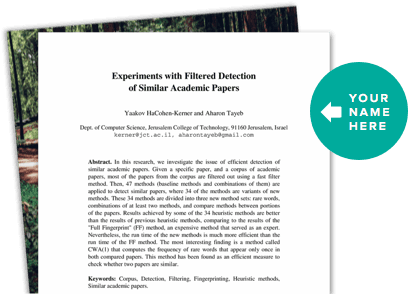About This Project
The goal is to test marine in-water debris collection technology in NYC’s urban marine environment at community access points to empower local stewards to take direct action. The project will be the first ever deployed continuous in-water device in Gowanus Bay, Brooklyn. We will use the experience to observe plastic behavior, collect debris, track data, and determine methods of operations for long-term use. Funding will complement a National Marine Sanctuary Foundation grant.
Ask the Scientists
Join The DiscussionWhat is the context of this research?
The proposed site is on Gowanus Bay (confluence of the Buttermilk Channel and Upper New York Bay). The Gowanus Bay (500 acres of waterway / 7 mile coastline) in Brooklyn, NY is bound by the communities of Red Hook and Sunset Park; within a NYC and NYS Department of Environmental Conservation (NYSDEC) Environmental Justice Area, with an unemployment rate of 21.6%; and approx. 25% live below the poverty level. These socioeconomic challenges are exacerbated by heavy industrialization, leading to polluted waterways, including an neighboring Super Fund Site and combined sewer outfalls. Marine pollution contributes to this toxic environment, but data and action are lacking in this region due to a lack of equipment and knowledge.
What is the significance of this project?
Most marine debris removal actions by communities focus on important shoreline activities. While shoreline removal must continue, this project differentiates itself by using the first ever in NYC, n-water solutions that are continuous, 24 hours / 7-days per week.
In-water is critical to test because
Shorelines are hard to access due to riprap and guardrails.
Shoreline removal occurs on a single day and is not continuous.
Removal of small pieces of plastic debris is dangerous, time-consuming, and challenging in many locations.
Tidal flows carry marine waste off shorelines and into the waterways, it is critical to capture floating debris BEFORE it moves out into our oceans where it can cause greater harm and degradation.
What are the goals of the project?
There are three aspects of the project - purchase of equipment, deployment and data tracking and testing. The goals are as follows:
1. Purchase equipment that the team has identified as the most appropriate for this first test launch, the DPOL. It is simple to assemble, can integrate with solar, is moveable if needed, inexpensive, durable, and continuously operating.
2. Launch equipment; observe and document success, and challenges over the duration of two deployments 8-12weeks in the summer of 2024.
3. Remove marine debris: track on a regular basis, quantity of plastic and micro-plastics; document and record through photography, counting, weighing, and categorizing.
Budget
All budget items are related to the mechanical devices, solar power equipment and accessories needed for the marine debris and plastics removal initiative. The team has recently received the Ocean Odyssey Marine Debris grants for Diversity, Equity, Inclusion, Justice and Accessibility to support funding disadvantaged youth in our community to participate as summer interns. They will learn about marine debris, ocean plastics and the harms of microplastics. The equipment is needed to be able to fully realize the program and engage the youth in the activities of plastics removal and documentation. In addition, signage allows for us to educate the general public who pass by this part of Gowanus Bay.
Endorsed by
 Project Timeline
Project Timeline
The grant funding will be used in the spring and summer of 2024. This is a rapid deployment to meet the needs of other funding sources. The goal is to purchase equipment in April and early May, deploy/collect data at the first site in June for eight weeks, and deploy/collect data at the second site in August for eight weeks. The project will conclude in October with the aim of documentation, recording and analysis to be complete by November 2024.
May 01, 2024
Project Launched
May 10, 2024
Purchase equipment
May 24, 2024
Launch DPOL in-water device, Site 1
May 24, 2024
train youth on marine plastics and removal protocal
Jul 31, 2024
Track, observe, record marine debris removal - eight weeks
Meet the Team
Affiliates
Team Bio
The Marine Debris Field Kit is a multi-disciplinary group focused on urban coastal stewardship, led by Gita Nandan, an ecological architect / principal of thread collective, and Sara Eichner, a data visualization specialist working on waterfront cartography / principal of Studio 2263. The project is supported by the Advisory Circle, including scientists, and experts in waterways, sanitation, and public space.
Gita Nandan
Ms. Nandan is an architect, urban designer, educator, and leader in community resilience planning and ecological design. She is co-founder and principal of the award winning design firm thread collective, founder/current board chair of RETI Center, and adjunct associate professor at Pratt Institute Graduate Center for Planning and Environment. Her work is at the nexus of where design meets the ecology of place, and future proofing communities, driven by finding creative solutions to complex problems. Understanding the past and future of our coastal edges, has been a life-long passion. The urban condition of our low-lying communities, rich with ecological potential, offers an often neglected realm where Ms.Nandan’s work has most recently been focused. Most recently Ms.Nandan has launched the Marine Debris Field Kit, and has been working on BlueBlocks Gardens, a floating human-constructed marshland ecological system created to soften the city’s hard coastal edges.
Credentials: M. Arch, UC Berkeley / WEDG and LEED Certified, licensed practitioner in NY, NJ and PA.
Lab Notes
Nothing posted yet.
Additional Information
Project Backers
- 2Backers
- 1%Funded
- $15Total Donations
- $7.50Average Donation




